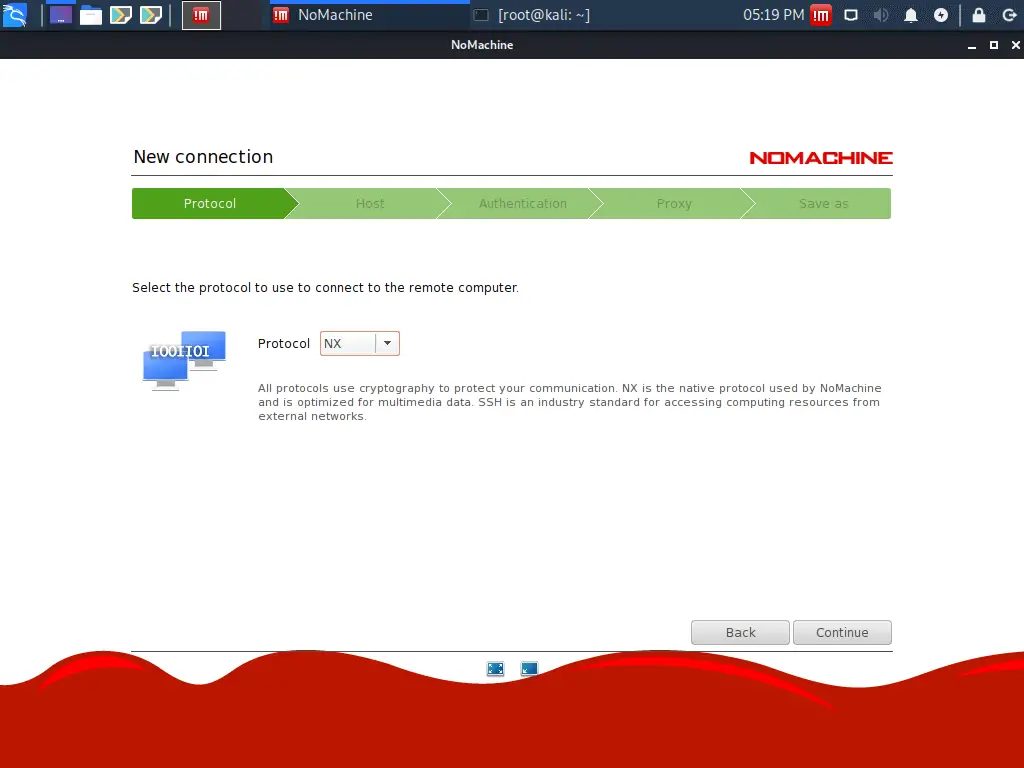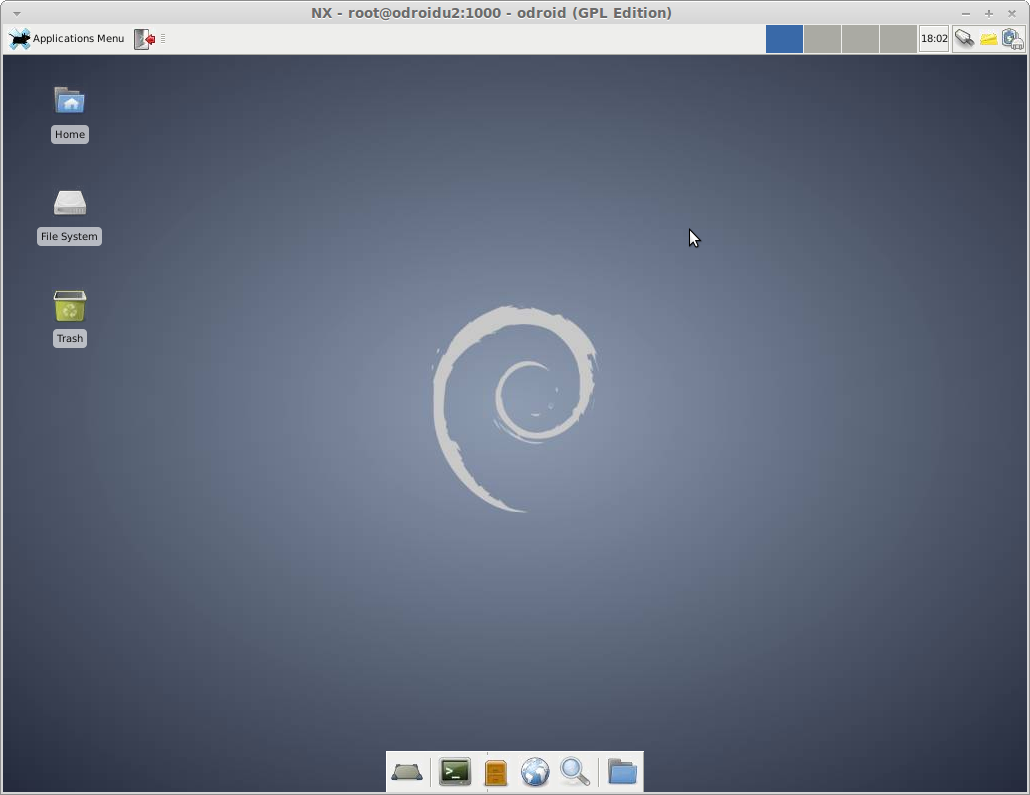

Sets key-click volume (allowable range: 0-100). Sets the default root window to solid white.

Sets the default root window to solid black (default). bsĭisables backing store support on all screens.
Debian start nomachine server manual#
See also the xdm(1) and Xsecurity(_miscmansuffix_) manual pages. Specifies a file which contains a collection of authorization records used to authenticate access. Audit lines are sent as standard error output. Level 4 enables messages from the SECURITY extension, if present, including generation and revocation of authorizations and violations of the security policy. Level 2 additionally reports all successful connections and disconnects. The default level is 1, meaning only connection rejections are reported. This option exists primarily for running test suites remotely. Enables access by any host, and permits any host to modify the access control list. acĭisables host-based access control mechanisms.

the ratio of how much is reported to how much the user actually moved the pointer).
Debian start nomachine server how to#
See the DISPLAY NAMES section of the X(_miscmansuffix_) manual page to learn how to specify which display number clients should try to use. If multiple X servers are to run simultaneously on a host, each must have a unique display number. The X server runs as the given displaynumber, which by default is 0. Last but not least, nxagent accepts several more options, the so-called nx/nx options, provided via the $DISPLAY environment variable or the -options command line option. Those default options have to be provided via the command line.įurthermore, nxagent accepts some nx-X11 specific options, described further below. Nxagent accepts a range of default X server options as described below. However, nxagent also supports rootless (or seamless) application mode and a shadow session mode (similar to what VNC does). However, nxagent also supports rootless (or seamless) application mode and a shadow session mode (similar to what VNC does).Įxample: You can launch a complete desktop session inside this nested X server now: On your local X server a new window appears being an X server itself. by typing 'nxagent -ac :1' in a terminal window), it typically launches in "windowed desktop" mode. Arctica Session Manager, X2Go Server, etc.). nxagent startup is usually managed by the underlying framework (e.g. When bundled with a remote application framework, you normally don't have to launch nxagent manually. Other than the system's local X.org server, nxagent does not require to be run as root. Nxagent and nxproxy are utilized by various remote application/desktop frameworks for providing server-side GUI application access from remote client systems.Ĭurrently, nxagent is co-maintained by three of these projects: The Arctica Project, TheQVD and X2Go. Sessions can be started from one client, suspended and then resumed from another (or the same) client. When used in proxy agent mode, nxagent adds the feature of being suspendible. The counterpart application on the other end (i.e. Nxagent can be used standalone as a nested X server (with NX protocol disabled), but its real benefits are gained when using it over remote connections via the nxcomp compression library. The NX protocol increases performance when using X applications over high latency and low bandwidth networks, while providing a local (LAN-like) usage experience even if connecting from off-site locations (via cable modem or GSM). Nxagent implements a very efficient compression of the X11 protocol, called the NX protocol. Nxagent is an X server for remote application/desktop access similar to Xnest or Xephyr. Nested Xserver optimized for remote computing Synopsis


 0 kommentar(er)
0 kommentar(er)
